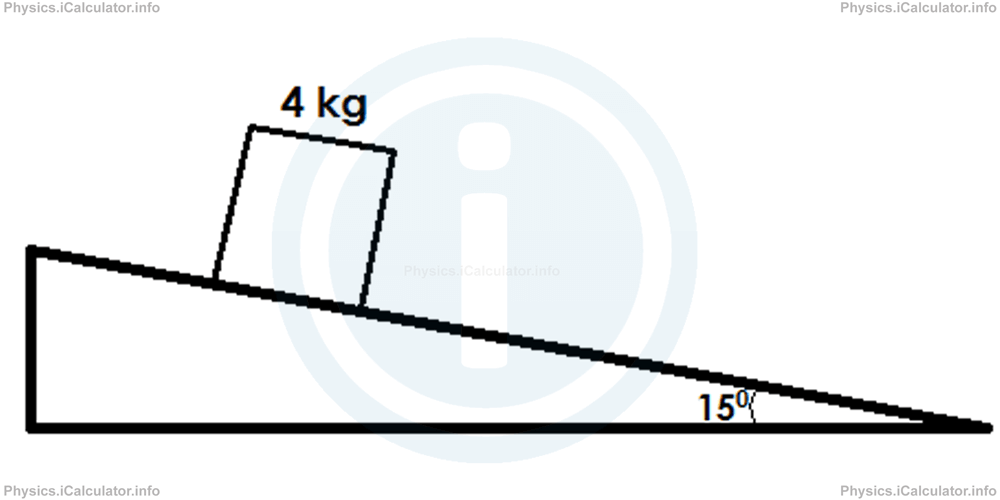Menu
Types of Forces I. Gravitational Force and Weight
Please provide a rating, it takes seconds and helps us to keep this resource free for all to use
The following physics revision questions are provided in support of the physics tutorial on Types of Forces I. Gravitational Force and Weight. In addition to this tutorial, we also provide revision notes, a video tutorial, revision questions on this page (which allow you to check your understanding of the topic) and calculators which provide full, step by step calculations for each of the formula in the Types of Forces I. Gravitational Force and Weight tutorials. The Types of Forces I. Gravitational Force and Weight calculators are particularly useful for ensuring your step-by-step calculations are correct as well as ensuring your final result is accurate.
Not sure on some or part of the Types of Forces I. Gravitational Force and Weight questions? Review the tutorials and learning material for Types of Forces I. Gravitational Force and Weight
| Tutorial ID | Title | Tutorial | Video Tutorial | Revision Notes | Revision Questions | |
|---|---|---|---|---|---|---|
| 4.2 | Types of Forces I. Gravitational Force and Weight |
Types of Forces I. Gravitational Force and Weight Revision Questions
1. A 150 g bird is flying. What are the magnitudes of its Gravitational Force and Weight rounded to 2 decimal places? Take g⃗ = 9.81 N/kg.
- Fg = 1.47 N, W = 0
- Fg = 147.15 N, W = 147.15 N
- Fg = 0, W = 1.47 N
- Fg = 147.15 N, W = 0
Correct Answer: A
2. It is known that gravity of Moon is much weaker than that of the Earth.
Which of the following statements is WRONG?
- Weight of an object at Moon is smaller than weight of the same object on Earth
- Mass of an object at Moon is smaller than weight of the same object on Earth
- Gravitational force experienced by an object at Moon is smaller than that of the same object on Earth
- Gravity experienced by an object at Moon is smaller than that experienced by the same object on Earth
Correct Answer: B
3. What is the weight of the object shown in the figure?
(Take g⃗ = 9.81 N/kg; cos 150 = 0.966; sin 150 = 0.259 )

- 10.16 N
- 39.24 N
- 37.91 N
- 588.60 N
Correct Answer: C
Whats next?
Enjoy the "Types of Forces I. Gravitational Force and Weight" practice questions? People who liked the "Types of Forces I. Gravitational Force and Weight" practice questions found the following resources useful:
- Practice Questions Feedback. Helps other - Leave a rating for this practice questions (see below)
- Dynamics Physics tutorial: Types of Forces I. Gravitational Force and Weight. Read the Types of Forces I. Gravitational Force and Weight physics tutorial and build your physics knowledge of Dynamics
- Dynamics Revision Notes: Types of Forces I. Gravitational Force and Weight. Print the notes so you can revise the key points covered in the physics tutorial for Types of Forces I. Gravitational Force and Weight
- Check your calculations for Dynamics questions with our excellent Dynamics calculators which contain full equations and calculations clearly displayed line by line. See the Dynamics Calculators by iCalculator™ below.
- Continuing learning dynamics - read our next physics tutorial: Types of Forces II. Resistive Forces (Frictional Force. Drag). Terminal Velocity
Help others Learning Physics just like you
Please provide a rating, it takes seconds and helps us to keep this resource free for all to use
We hope you found this Physics tutorial "Types of Forces I. Gravitational Force and Weight" useful. If you did it would be great if you could spare the time to rate this physics tutorial (simply click on the number of stars that match your assessment of this physics learning aide) and/or share on social media, this helps us identify popular tutorials and calculators and expand our free learning resources to support our users around the world have free access to expand their knowledge of physics and other disciplines.